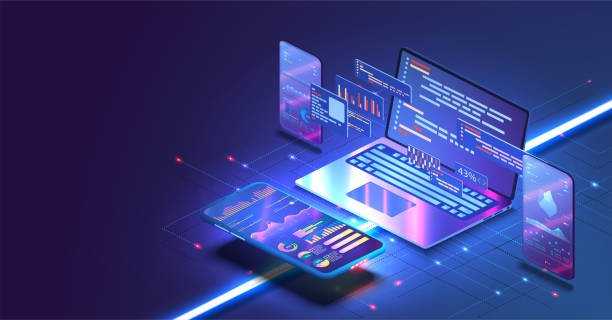In today’s digital age, mobile apps are crucial for business success, enabling companies to reach customers in new and innovative ways. Whether you’re a startup or an established business, developing a mobile app can provide significant benefits. This comprehensive guide will walk you through the mobile app development process, from the initial concept to the final launch.
1. Ideation and Conceptualization
Understanding Your App’s Purpose:
- Define the core purpose of your app. What problem does it solve? Who is your target audience?
- Conduct market research to identify gaps and opportunities. Analyze competitors to understand what works and what doesn’t.
Creating a Value Proposition:
- Outline the unique value your app provides to users. This will guide your development process and marketing strategy.
Defining Key Features:
- List essential features that align with your app’s purpose and audience needs.
- Prioritize features to focus on a Minimum Viable Product (MVP) that allows you to launch quickly and iterate based on user feedback.
2. Planning and Strategy
Project Scope and Requirements:
- Create a detailed project scope document that outlines all requirements, functionalities, and milestones.
- Define technical specifications and choose the development platform (iOS, Android, or both).
Budget and Timeline:
- Estimate the budget for development, including design, development, testing, and marketing.
- Develop a realistic timeline that includes all phases of the project.
Building a Team:
- Assemble a team of experienced developers, designers, and project managers. At MechPlan, our team has the expertise to bring your vision to life.
4. Development
Choosing the Right Technology Stack:
- Select the appropriate programming languages, frameworks, and tools based on your app’s requirements and platform.
- Consider factors like performance, scalability, and maintainability.
Backend and Frontend Development:
- Develop the backend infrastructure to handle data storage, user authentication, and server-side logic.
- Build the frontend components, focusing on responsiveness and smooth performance.
Integration of Features and APIs:
- Integrate essential features like push notifications, payment gateways, and third-party APIs.
- Ensure seamless integration to provide a cohesive user experience.
5. Testing and Quality Assurance
Types of Testing:
- Conduct various types of testing, including functional, usability, performance, security, and compatibility testing.
- Use automated testing tools and manual testing methods to identify and fix bugs.
Beta Testing:
- Release a beta version of your app to a select group of users. Gather feedback and make necessary improvements.
- Use beta testing platforms like TestFlight (for iOS) and Google Play Console (for Android).
Quality Assurance:
- Ensure your app meets all quality standards and provides a consistent experience across different devices and operating systems.
- Perform rigorous testing to ensure reliability, security, and performance.
6. Launch and Deployment
App Store Optimization (ASO):
- Optimize your app’s title, description, keywords, and visuals to improve its visibility in app stores.
- Encourage user reviews and ratings to enhance credibility and attract more downloads.
Submission to App Stores:
- Follow the guidelines for submitting your app to the Apple App Store and Google Play Store.
- Ensure all necessary documentation, screenshots, and promotional materials are in place.
Marketing and Promotion:
- Develop a marketing strategy to promote your app. Utilize social media, content marketing, email campaigns, and paid advertising.
- Collaborate with influencers and industry partners to increase visibility and downloads.
7. Post-Launch and Maintenance
Monitoring and Analytics:
- Use analytics tools to track user engagement, behavior, and feedback.
- Monitor app performance and identify areas for improvement.
User Feedback and Updates:
- Continuously gather user feedback and release regular updates to address issues and add new features.
- Stay engaged with your user community to build loyalty and improve user satisfaction.
Maintenance and Support:
- Provide ongoing support to resolve technical issues and ensure smooth operation.
- Plan for long-term maintenance to keep your app up-to-date with the latest technology and user needs.
Conclusion
Developing a mobile app is a complex but rewarding process. By following this ultimate guide, you can navigate the challenges and create a successful app that meets your business goals and user expectations. At MechPlan, we specialize in mobile app development and are here to support you at every stage of your journey. Contact us today to turn your app idea into reality.




